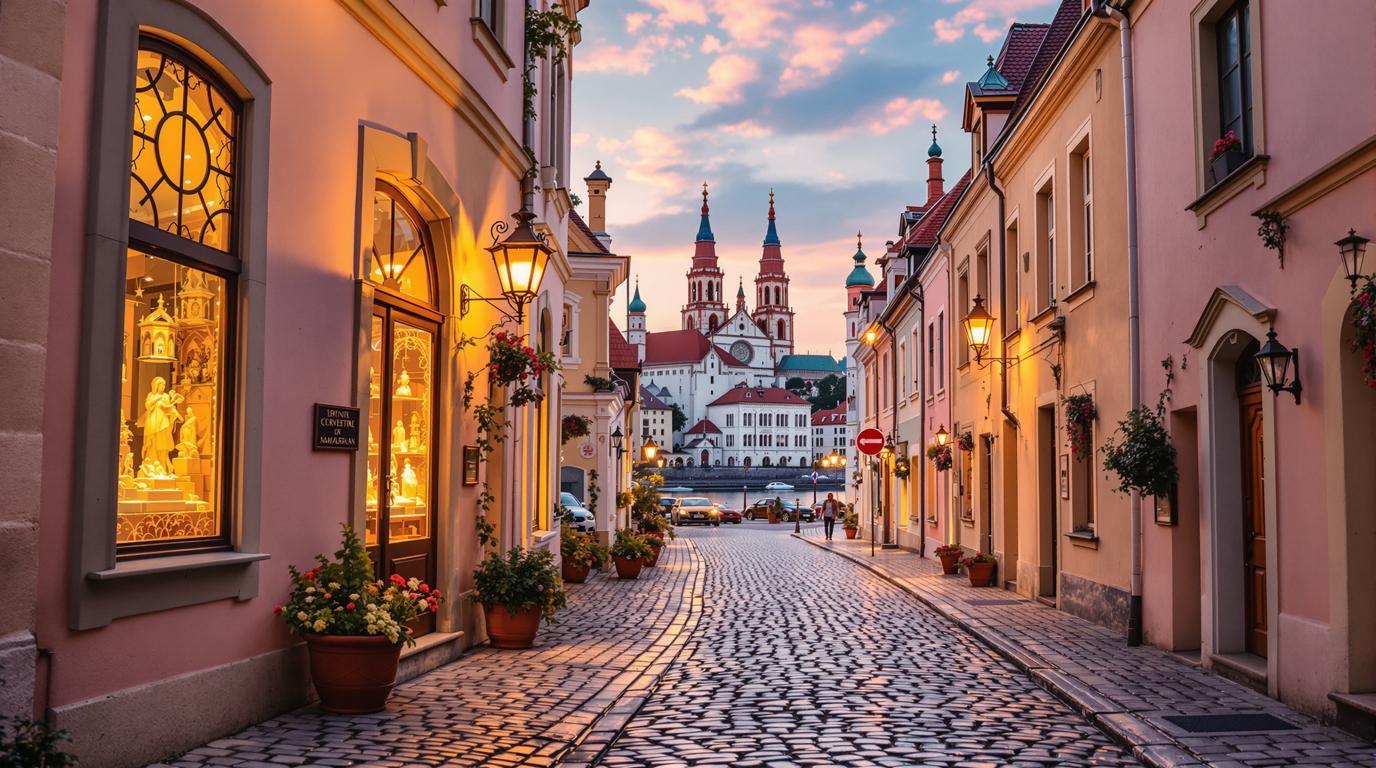Szentendre stands as Hungary’s hidden artistic gem, quietly flourishing just 20 kilometers north of Budapest along the gentle curves of the Danube. This charming riverside town has transformed from a medieval Serbian settlement into an artist’s paradise that somehow remains under the international tourist radar despite its extraordinary beauty.
A canvas of cobblestone and color
Walking through Szentendre feels like stepping into a painting. Baroque buildings in pastel hues line narrow cobblestone streets that wind mysteriously uphill from the river. The Mediterranean atmosphere seems almost misplaced in Central Europe, yet perfectly at home among the town’s artistic spirit.
Local artist Maria Kovács explains:
“We have a special light here that has drawn painters for generations. The way the sun reflects off the Danube and illuminates our colored facades creates something magical that you can’t find elsewhere in Hungary.”
The Serbian connection that shaped everything
Perhaps Szentendre’s most fascinating aspect is its deep Serbian heritage. In the late 17th century, Serbian refugees fleeing Ottoman rule settled here, bringing Orthodox Christianity and distinctive architectural influences that remain today.
The town boasts seven Orthodox churches, with the crimson-towered Blagovestenska Church standing as the jewel in the crown. Inside, gold-leafed iconostases and centuries-old frescoes transport visitors to another world entirely—one that feels more Balkan than Central European.
Art around every corner
Szentendre’s true identity emerges in its museums and galleries. With over 200 practicing artists in a town of just 25,000 residents, creativity permeates every street. The Kovács Margit Ceramic Museum showcases whimsical folk-inspired sculptures that have become emblematic of Hungarian ceramic art.
For something truly unexpected, the Micro Miracle Museum displays microscopic artwork visible only through special lenses—including a chess set on the head of a pin and a camel caravan passing through a needle’s eye.
The marzipan phenomenon you won’t believe
Sweet-toothed visitors shouldn’t miss Szentendre’s peculiar Marzipan Museum, where edible art takes center stage. Lifelike sculptures of Michael Jackson, Princess Diana, and elaborate Hungarian landmarks—all crafted entirely from almond paste—defy belief.
If you prefer wine tastings to confectionery, numerous cellars offer local varieties from nearby Etyek wine region, providing a perfect afternoon respite from gallery-hopping.
Step back in time at the Skanzen
Just outside town, the Szentendre Open Air Museum (Skanzen) preserves traditional Hungarian rural architecture across 60 hectares. Here, entire villages have been reconstructed building by building, creating a living encyclopedia of Hungarian folk culture.
History professor János Nagy notes:
“The Skanzen doesn’t just preserve buildings—it keeps alive traditions, crafts, and cooking methods that would otherwise be lost to time. It’s as close as you can get to time travel in Hungary.”
The Danube’s most picturesque promenade
Szentendre’s riverfront promenade rivals the scenic beauty of Europe’s most celebrated waterways. Willow trees frame postcard-worthy views of the Danube, while artists set up easels to capture the interplay of light on water.
During summer months, the riverside transforms into an open-air festival venue with music performances and food stalls selling lángos (fried dough topped with sour cream and cheese)—Hungary’s beloved street food.
When crowds thin and magic happens
While day-trippers from Budapest pack Szentendre’s main square before noon, the town reveals its authentic charm after 4 PM when tour buses depart. Early evenings bring locals out for promenades, and cafés become gathering spots where you might be invited to join conversations about art and politics.
Winter transforms Szentendre into a snow-covered wonderland with fewer visitors and an intimate atmosphere that many consider the town’s most authentic season.
Beyond the beaten path
Adventurous visitors should explore Pap-sziget (Priest Island), a tranquil Danube island accessible by a small bridge. Here, hidden beaches and untouched riverside forests offer respite from the town’s artistic energy.
For spectacular views that rival those of Europe’s grandest chateaux, hike to the cross atop Bükkös Hill overlooking the town—a vantage point few tourists discover.
Getting there: half the fun
While trains and buses connect Budapest to Szentendre in just 40 minutes, the most magical approach is by boat. Hydrofoil services along the Danube operate from May through September, offering a journey as memorable as the destination.
As your boat approaches, Szentendre’s church spires and red-tiled rooftops emerge gradually from behind river bends, providing the perfect introduction to this artistic wonderland where history, culture and beauty converge in unexpected harmony.
